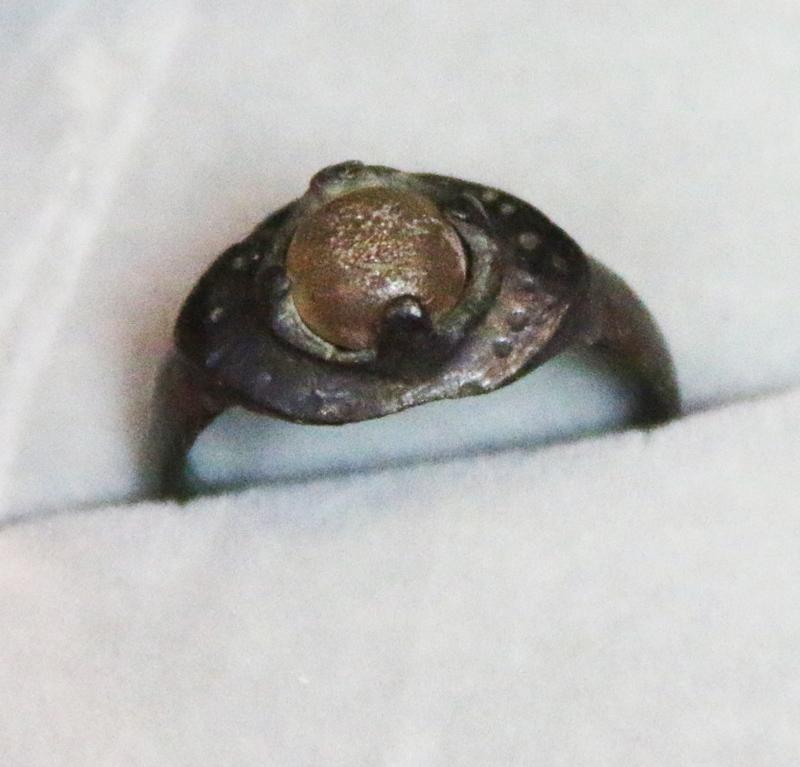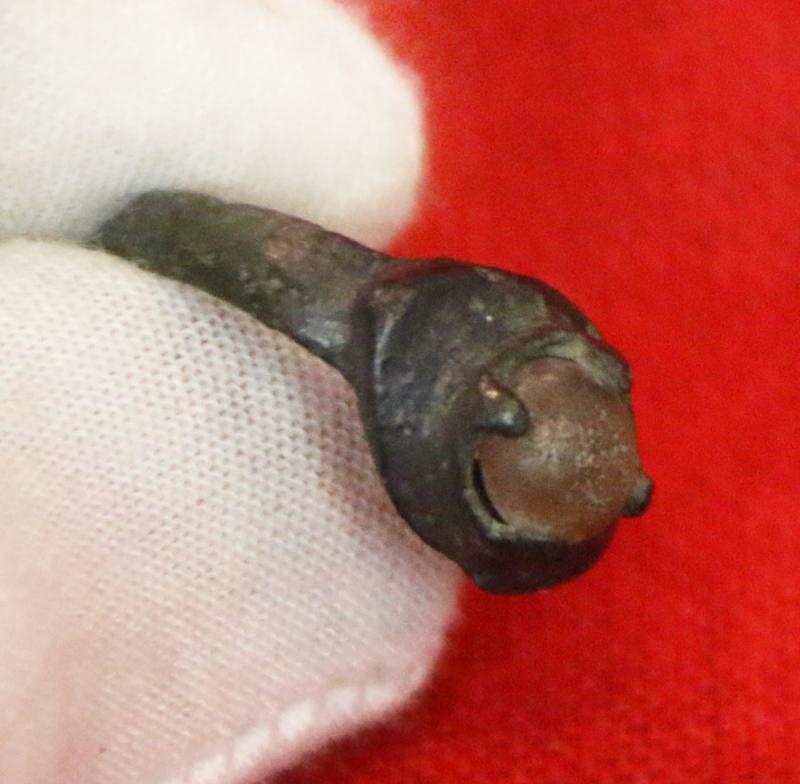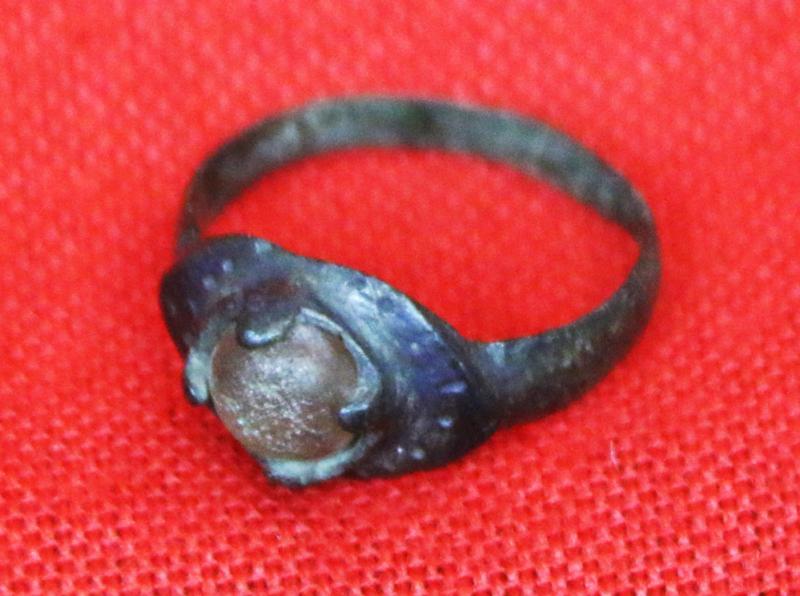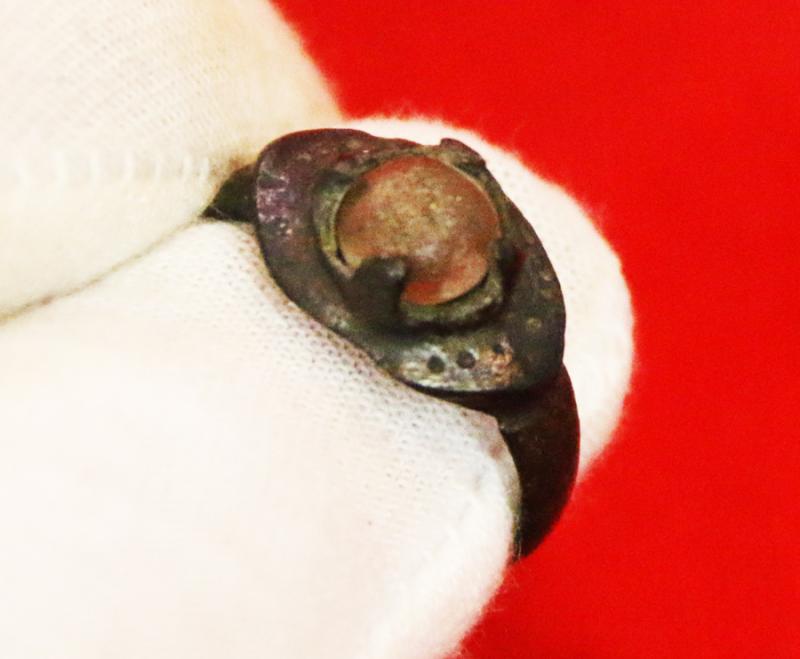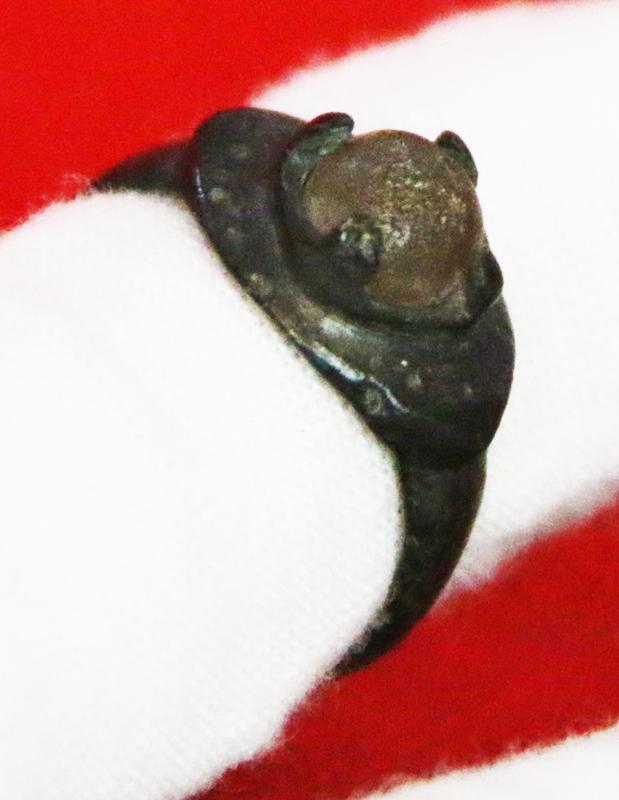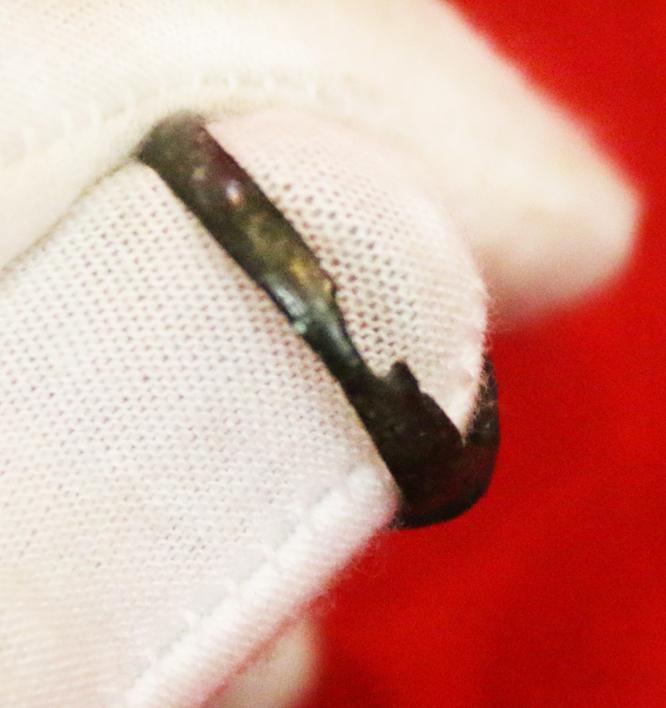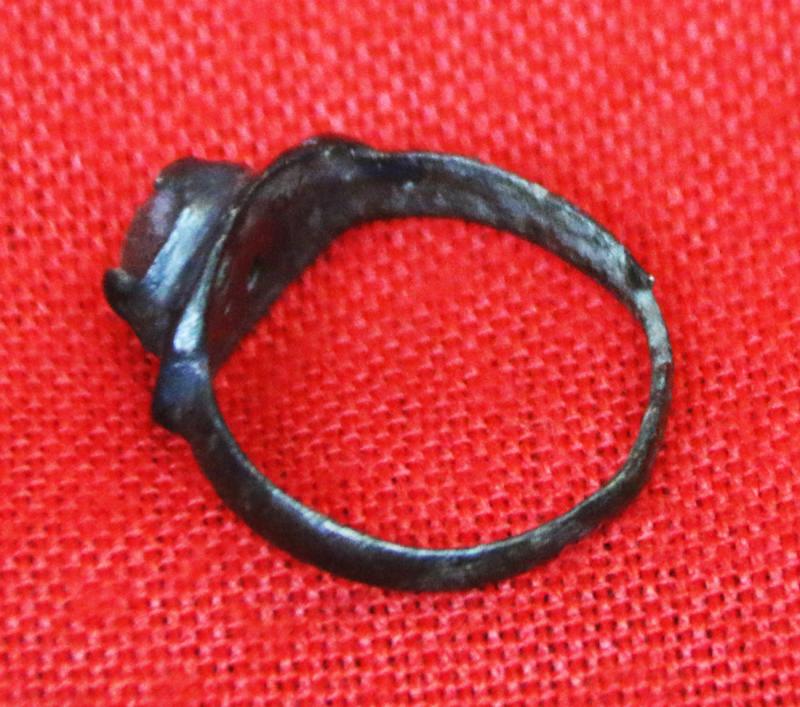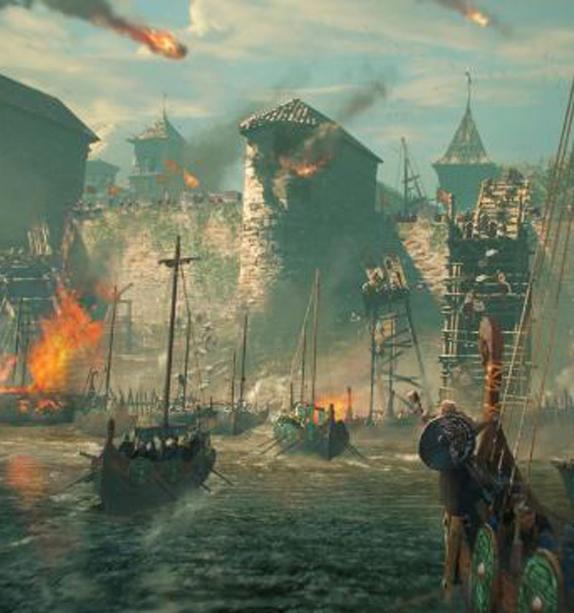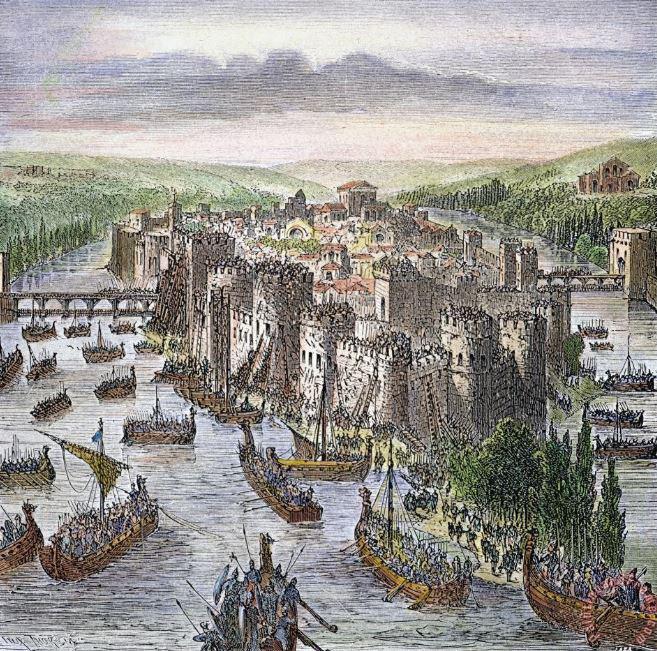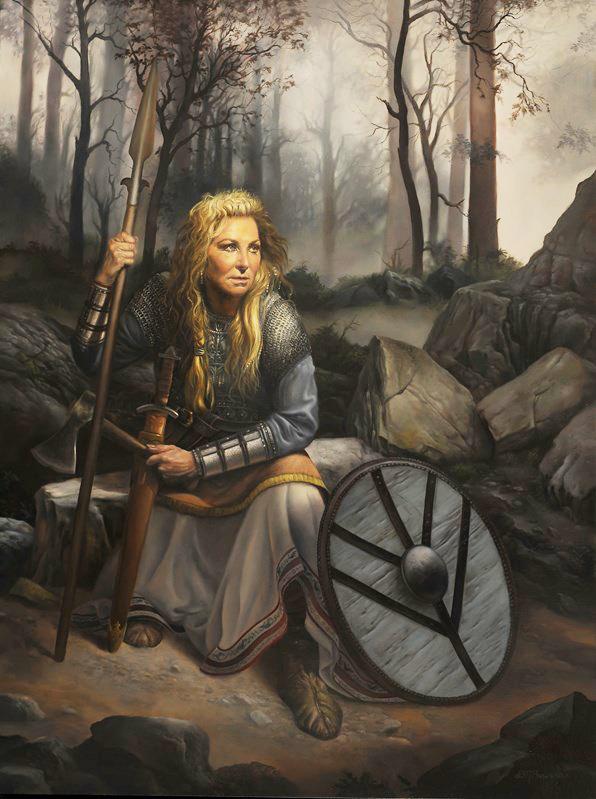A Wonderful, Around 1200 Year Old Original Viking Bronze Ring, Four Claw Bezel Setting With Its Original Amber Glass Cabochon Gem. Punched Dot Decor Around The Ovoid Surround Of The Claw Setting
Like many of our selection of antiquities, many originally arrived in England as souvenirs of a Grand Tour, from around 200 years ago. Two such pieces were Viking rings, around 1200 years old, recovered from Normandy, Northern France. Likely from the Viking sieges of Paris.
Although feminine in its appearance men wore such rings as did female Viking warriors.
While the majority of Viking warriors were men, some women actively participated in combat as shieldmaidens, and their presence is attested in historical texts and archaeological findings.
A notable example is the Birka female Viking warrior, whose grave was found to contain weapons like a sword, ax, spear, and shields. DNA analysis confirmed the individual was female, challenging earlier assumptions that the grave belonged to a male warrior.
Viking sagas and historical accounts mention shield-maidens, women who fought alongside men. These stories often depict them as skilled warriors, sometimes even legendary figures. Valkyries: In Norse mythology, Valkyries were female figures who chose which warriors would die in battle and be taken to Valhalla.
The evidence suggests that while Viking women warriors were not the norm, their presence in battles and as figures in legends and sagas is undeniable. The discovery of the Birka female warrior { a Viking warrior, whose grave was found to contain weapons like a sword, ax, spear, and shields. DNA analysis confirmed the individual was female, challenging earlier assumptions that the grave belonged to a male warrior.} and other archaeological finds, along with historical accounts, have contributed to a more nuanced understanding of the role of women in Viking society and warfare.
Saxo Grammaticus reported that shield-maidens fought on the side of the Danes at the Battle of Brávellir in the year 750:
"Now out of the town of Sle, under the captains Hetha (Heid) and Wisna, with Hakon Cut-cheek came Tummi the Sailmaker. On these captains, who had the bodies of women, nature bestowed the souls of men. Webiorg was also inspired with the same spirit, and was attended by Bo (Bui) Bramason and Brat the Jute, thirsting for war."
There were two Norse sieges of Paris. The first was in 845; and though a fairly minor affair in terms of battle, it had great symbolic significance. The second was roughly two generations later, in 885-886; was much larger (and deadlier); and had greater direct ramifications. Before the first siege, Viking raids were a new and growing problem for the peoples of Western Europe; but hitherto raids had been made by relatively small war bands bent on plunder. The Scandinavian adventurers might sack monasteries or villages, but would usually shun larger, better defended targets (Churchill, 1956). However, success was making the Norsemen bolder.
Aware of this growing threat, the aging emperor, Charlemagne, built a series of maritime defenses to protect his coasts and rivers from these new dragon ships. For the first few decades, the defenses worked; but the Vikings were growing in number, ability, and ambition and a new breed of leaders was coming to the fore. One of these leaders was a man the Frankish chroniclers call Reginheri; but who has since been widely equated with the semi-legendary figure Ragnar Lothbrok (Dzhak, 2016). Under Ragnar, Vikings were ready to step foot on the world stage. They were ready to capture the jewel of Western Europe, the city of Paris.
So, in Spring of 845, 120 dragon ships carrying about 5000 Scandinavian warriors, broke through the late emperor’s defenses and surrounded the walled city of Paris (Dzhak, 2016). In the ninth century, Paris was already more than a thousand years old. It was wealthy from its position as a trading center, and was the seat of one of Charlemagne’s three competing heirs, Charles the Bald. At this time, the heart of the city was confined to the islands in the center of the Seine, the Île de la Cité where the cathedral of Notre Dame stands today. This position made Paris eminently defensible in the eyes of the Frankish elite that ruled there; but it made it easily surrounded by the ship-born Vikings.
Richard Lassels, an expatriate Roman Catholic priest, first used the phrase “Grand Tour” in his 1670 book Voyage to Italy, published posthumously in Paris in 1670. In its introduction, Lassels listed four areas in which travel furnished "an accomplished, consummate traveler" with opportunities to experience first hand the intellectual, the social, the ethical, and the political life of the Continent.
The English gentry of the 17th century believed that what a person knew came from the physical stimuli to which he or she has been exposed. Thus, being on-site and seeing famous works of art and history was an all important part of the Grand Tour. So most Grand Tourists spent the majority of their time visiting museums and historic sites.
Once young men began embarking on these journeys, additional guidebooks and tour guides began to appear to meet the needs of the 20-something male and female travelers and their tutors traveling a standard European itinerary. They carried letters of reference and introduction with them as they departed from southern England, enabling them to access money and invitations along the way.
With nearly unlimited funds, aristocratic connections and months or years to roam, these wealthy young tourists commissioned paintings, perfected their language skills and mingled with the upper crust of the Continent.
The wealthy believed the primary value of the Grand Tour lay in the exposure both to classical antiquity and the Renaissance, and to the aristocratic and fashionably polite society of the European continent. In addition, it provided the only opportunity to view specific works of art, and possibly the only chance to hear certain music. A Grand Tour could last from several months to several years. The youthful Grand Tourists usually traveled in the company of a Cicerone, a knowledgeable guide or tutor.
The ‘Grand Tour’ era of classical acquisitions from history existed up to around the 1850’s, and extended around the whole of Europe, Egypt, the Ottoman Empire, and the Holy Land.
1 inch, maximum ext. size, UK ring size, 0 1/2
Every single item from The Lanes Armoury is accompanied by our unique Certificate of Authenticity. Part of our continued dedication to maintain the standards forged by us over the past 100 years of trading
Code: 25803
395.00 GBP

